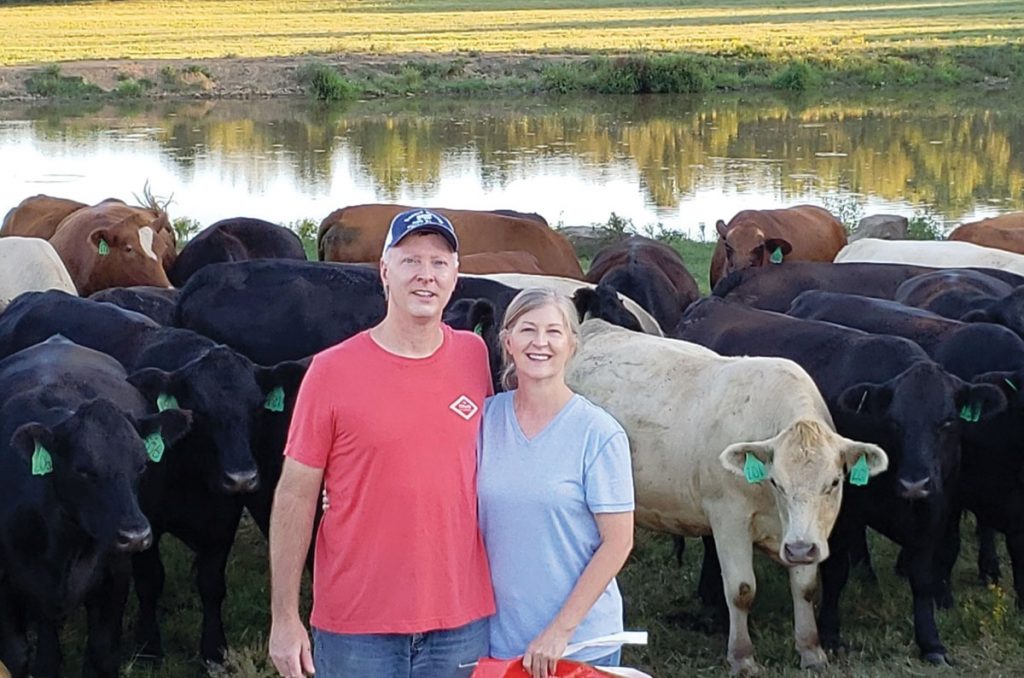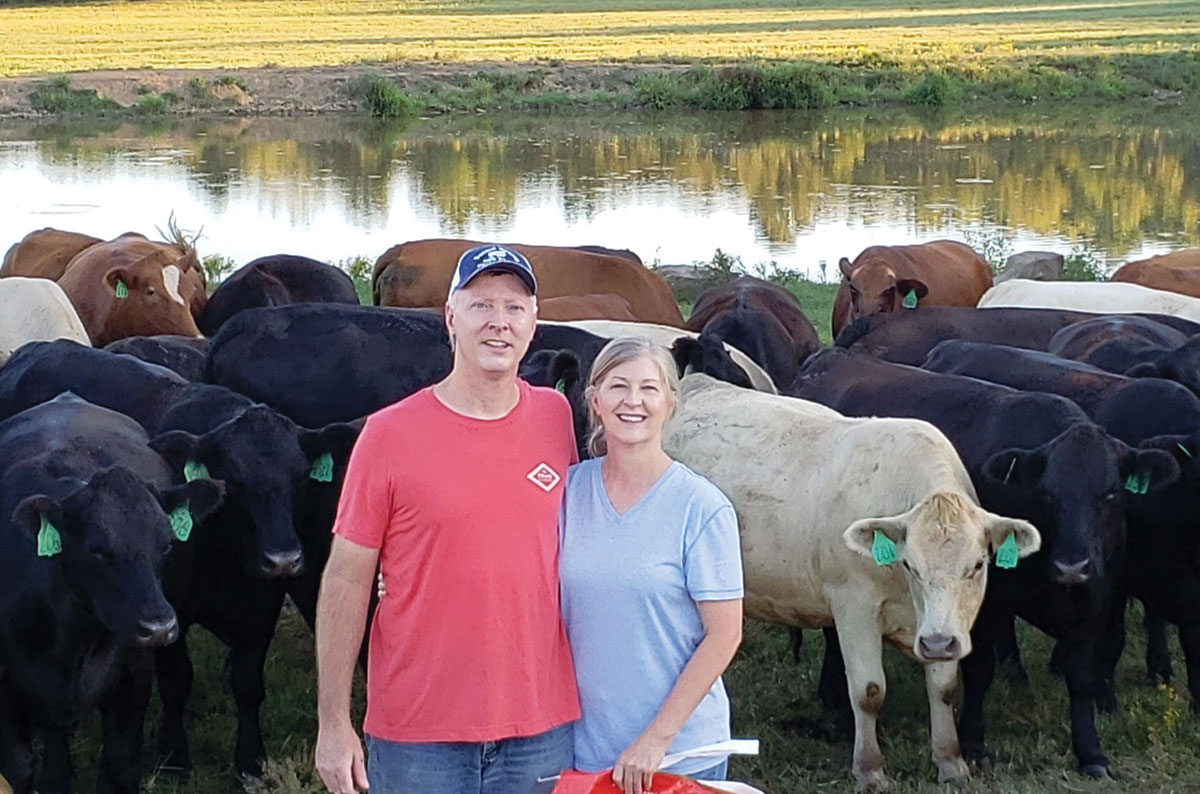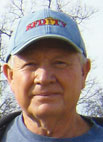
The Ledbetter and Hill families were neighbors for generations, but now their farms are in one family
A rather unique merger was founded on love rather than to promote income or land acquisition in Wesley, Ark.
The 360-acre Ledbetter farm began with Lloyd and Cleo Ledbetter in the 1960s. Both were raised locally. After World War II, Lloyd returned to farming by working at different farms. Then, around 1962, Lloyd and Cleo were renting a house when the farm next door came up for sale. Delighted, they purchased the land and developed a cow/calf operation.
Lloyd and Cleo had two sons, Ray and Loy, who worked the farm together. Loy never married or had children, though Ray married his childhood sweetheart, Caroline Hill, who lived 2 miles down the road and thus created the love-born merger. In terms of the farm, Ray added turkeys to his parents’ cow/calf herd, as well as dairy cows for a few years when his sons Faron, Jeff and Corey were young.
“While I remember the milk cows and swimming with my brothers in Lollars Creek, which happens to run through both the Ledbetter and Hill farms, what I remember most fondly is helping with custom baling,” Faron explained. “Dad cut the hay, I raked it and Uncle Loy baled it. That experience gave me a chance to visit and get to know many people. The relationships I made then helped me later get elected as Madison County Clerk for 11 terms until I retired a year ago and still helps me now that I sell real estate for Collier and Associates out of Fayetteville.”
Faron’s father Ray passed in 2003. Caroline and three Ledbetter brothers continued with the farm which now supports a commercial herd and is part of the trust that combines the Ledbetter and Hill farms.
The 100-acre Hill farm came from Caroline’s side of the family and is now used to produce hay for the cow/calf herd on the Ledbetter farm. Caroline’s grandparents Daltie and Rudy Hill purchased the land in the early 1950s. The farm had a few chickens, as well as a commercial cow/calf herd. It was also among the first in Madison County to install a large poultry house. The Hill farm passed through the generations until Caroline inherited it because she was the only direct descendent.
“The farms combined like the families did,” Faron said. “Our families were neighbors since the 1960s and lucky enough to raise several generations on family land. Raising our daughters Kirstyn and Katie Moore here was really important to both my wife Ginger and I.”
Faron believes the most important factor in successfully running a small farm is diversifying income, a concept he learned from family example as well as other farmers. He also believes the appearance of that diversification has changed through time. Rather than depending upon several agricultural streams, such as his dad’s turkeys, custom baling, commercial cattle and fescue seed income sources, many small farms today have a single agricultural income stream such as the Ledbetter’s commercial cow/calf operation.
“I feel modern-day smaller farms like ours often produce supplemental income with off-farm jobs being the main source,” Faron said.
Faron and Ginger manage the farms’ daily operation side-by-side, even more so since Ginger retired from Arvest Bank in Huntsville, Ark. Ginger also runs a highly-detailed computerized system to keep track of each animal and hay production so she and Faron can uncover patterns for improvement. Working the cattle, however, is like a family reunion because it’s “all hands on deck,” including their daughters and Faron’s brothers Jeff and Corey, whose time is mostly dominated by their careers at Tysons.
Farm management is based on an annual cycle that approximates the four seasons. In winter the emphasis is repairing fences, as well as feeding cattle, which includes unrolling hay every day. Cattle receive cubes once a week so they come running toward the truck rather than running away when they need to be gathered. In addition to spring calving, the other spring emphasis is fertilizing with local chicken litter and spraying for weeds. Summer is hay season and fall is brush hogging. Fall calving is delayed until October after brush hogging is done and there are fewer flies.
The Ledbetter herd is comprised of 75 Angus and Angus/Charolais commercial females bred by two Angus bulls. The spring and fall calving seasons run two months each, with the calves being weaned at 500 to 550 pounds and sold at the Benton County sale barn in Siloam Springs.
Though Faron tried fence line weaning, the last couple years he found separating the calves works best for him. He retains 10 heifers per year as replacements because he prefers a younger breeding herd. He waits to breed heifers until they are 21 months with the more mature age seeming to promote fewer birthing problems and a higher breeding back percentage. Bulls are replaced every seven years in order to change the bloodlines and to minimize manageability and health issues.”
“Around here we are fortunate to have many good breeding stock producers so I buy my bulls from various local farms, which diversifies my bloodlines even more,” Faron explained.
The herds are worked two months after calving season when bull calves are banded and all receive shots. Heifers receive a second round because optimum herd health makes having an off-the-farm job workable. The cattle are given good minerals all year, including one with fly control during the summer though cattle are also sprayed as needed. Faron readily admits his biggest challenge is keeping up to date on current issues, such as black-headed buzzards and new diseases.
“Sometimes people think inheriting land guarantees success, but that simply isn’t true. Farming is hard work and requires paying attention to detail.” Faron said. “The land belongs to God and we are just temporary caretakers. Our merged families and these farms have been a blessing, something we are thankful for and never take for granted.”







